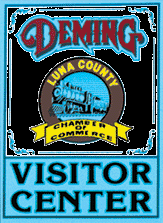Genesis II Different From Genesis I
By Eric HaakonstadProgram ManagerBigelow Aerospace
The successful development of Genesis I has brought forth the creation of Genesis II.
Since our first launch, we have been able to learn and grow from the information we compiled from our orbiting vehicle — expanding our knowledge to improve upon our new creation. We have been able to use and improve upon many of the materials and systems found on Genesis I and incorporate them into the construction of Genesis II, resulting in a similar, yet improved vehicle. With upgrades to vehicle control and sensory equipment, we are able to improve our interaction with the public. These new upgrades contribute to our ultimate goal: the evolution of product development for a pathway to manned missions.
Since the launch of Genesis I, we have tripled our high-data-rate communication coverage for our vehicles by expanding beyond our original Las Vegas and Virginia sites and constructing ground station sites in Alaska and Hawaii. The launch of Genesis II requires Bigelow Aerospace to coordinate multi-vehicle simultaneous operations. With the increase in ground stations and orbiting vehicles, we will be able to communicate with Genesis I and II up to five hours per day. We hope this will enhance our monitoring of Genesis II during the critical initial acquisition phase. These preliminary constellation operations present new challenges in prioritizing resources for data links, command and control and processing of vehicle data. New domestic and international communication sites are planned for the coming year.
The vision system aboard Genesis II is one example of how we hope to be able to utilize our enhanced communication capabilities. The vision system contains marked improvement in design over the system in Genesis I. Considerable effort has been made by Bigelow Aerospace engineers to improve the overall performance, reliability, and data-flow capabilities of the vision system to enhance the images from each of the 22 cameras onboard Genesis II. Technology demonstrators include a refined networking architecture over the Genesis I design, dual FireWire and Ethernet camera interfaces, and multiple new camera types including articulated cameras and a wireless camera for additional exterior shots. The cameras have allowed us to make our upcoming flight more personal and insightful for the public.
The images recorded from the 22 onboard cameras are expected to be sent back to our mission control headquarters, giving the public a chance to view payloads on and in Genesis II. We have expanded upon Genesis I payloads in complexity and number. This includes the “Fly Your Stuff” program, which will allow customers to see their own objects floating around in microgravity. A new exterior image projection system will allow for existing customers, as well as new ones, to display any picture of their choice on the main body of the vehicle. The public interaction has been further expanded into post-launch activities with the fun and experimental
Space Bingo project.
We understand that the public would like to be in space themselves. As a stepping-stone to our manned missions, the Genesis II sensor suite has been improved with additional pressure, temperature, attitude control and radiation detection sensors. This will allow Bigelow Aerospace to better characterize the low Earth orbit (LEO) environment and the impact it has on spacecraft components, both interior and exterior. These new improvements also affect our revamped habitat for small-scale biological organisms and bugs. The
new habitat includes new air and water-handling control systems, environmental sensors and robotic manipulators as preparation for the accommodation of larger life systems.
Genesis II is equipped with a distributed, multi-tank inflation system. This is an improvement on the single-tank design of Genesis I.
By using multiple tanks, the reliability of the inflation process is increased and allows for discrete gas control. This is the next evolutionary step toward maintaining the multiple gas supplies needed for our future man-tended vehicles.
Genesis II contains the same core attitude (guidance) control and stabilization system used on Genesis I with improvements that give us more refined pointing control and a faster dampening of the initial tip-off rate or body rotation from rocket separation. The basic magnetic torque rods, magnetometer, GPS and sun sensors from Genesis I are augmented on Genesis II with new reaction-wheel assemblies and a precision measurement system. The reaction-wheel system allows for the significantly faster body rate settling time and provides a technology demonstration capability needed for the larger future vehicles planned for BA.
Finally, we have installed additional layers to the outer shield of Genesis II to add more safeguards to the vehicle and subsystems. These additional layers offer better protection against micrometeoroid collision damage and improved thermal management, and will help characterize shielding requirements necessary for future missions.(Added on 03/05/2007)























